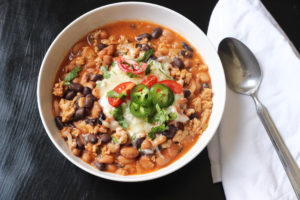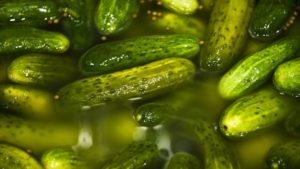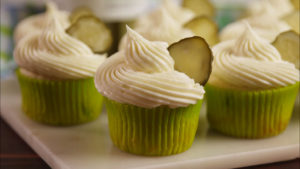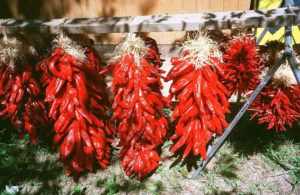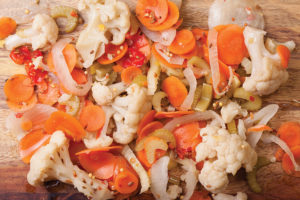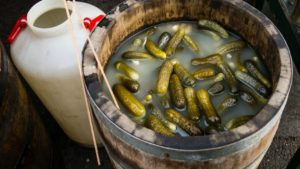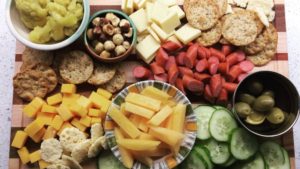Pickle Festival returns to Rosendale Nov. 19
by
It may seem hard to believe, if you haven’t actually been the one doing all the work, that the Rosendale International Pickle Festival has been around for two decades now. It was founded by local garden center proprietor (and now town historian) Bill Brooks, his wife Cathy and their friend Eri Yamaguchi, who missed the traditional tsukemono of her homeland. What started out as a Japanese dinner party for 200 soon turned into a celebration of all things pickled that attracted about 1,000 people the first year, and by now, 5,000 or more annually. From the beginning, it has also been a fundraiser that benefits several different community projects in and around Rosendale each year.
The Pickle Festival returns to the Rosendale Recreation Center this Sunday, November 19 from 10 a.m. to 5 p.m. A highlight is always the county-fair-style competition for home-fermented concoctions, but it’s also a fun gathering for those more interested in tasting pickle products than in creating them. Of the 100 vendors setting up shop both inside the Rec Center and in and around the large tent outside, about a quarter will actually be selling pickled foods of myriad descriptions, including the legendary deep-fried pickles-on-a-stick. Other prepared foods to round out your meal, in addition to crafts and packaged gourmet products, will also be available for sale.
Repeat visitors know to expect live music and dancing from many ethnic traditions — as diverse as there are types of pickled foods around the world — for most of the day. Late in the afternoon, the Pickle Triathlon gets underway. It starts with a Pickle-Eating Contest, in which contestants vie to consume the entire contents of a small jar of Mount Olive Pickle Spears in the shortest period of time. Next comes a Pickle-Juice-Drinking Contest, where contestants are tasked with downing 24 ounces of brine through a straw. The final event, the Pickle-Tossing Contest, is a team effort: The pitcher tosses a pickle chip to the catcher, who must catch it in his or her mouth, then spurt it into the counter’s jar. Gold, Silver and Bronze awards are conferred upon the top three winners in each category.
The Brookses have been trying to retire gradually from their management of this event for about three years now, with the Rosendale Chamber of Commerce now the official Festival sponsor. But they’re still the ones to contact if you want to enter some of your own specialties into competition. Eligible categories in the Home Pickling Contest include Kimchi, Dill Pickles, Sweet Pickles, Pickled Onions/Garlic, Dilly Beans, Pickled Fruit, Pickled Beets, Pickled Veggies, Pickled Brussels Sprouts, Chutneys, Fermented Liquid or Semi-Liquid Products and
Miscellaneous. A Best of Show ribbon will also be awarded.
Competitors are limited to up to three submissions in any combination of categories, and are asked to submit two jars of the same item for each entry (one for display, one for the judges to sample). Each jar should be labeled with the nature of the contents plus the entrant’s name, address, phone number (including area code) and e-mail address. You can drop them off at the Rec Center by 11 a.m. on the day of the Festival (judging begins at noon), or arrange an appointment to drop them off earlier in the week by e-mailing picklelady16@yahoo.com.
Admission to the 20th annual Rosendale International Pickle Festival costs $5 per adult; kids get in free. Pets are not permitted on-site, and the event goes on rain or shine. The Rosendale Community Center is located at 1055 Route 32, just south of its intersection with Route 213. To find out more, visit http://rosendalechamber.org/pickle-festival or www.facebook.com/events/1056620817803091.


